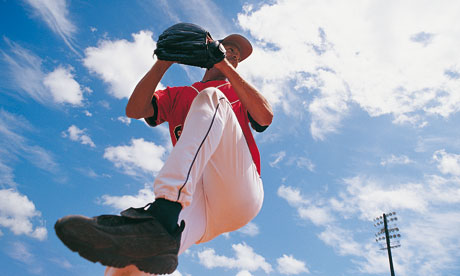Subscapularis – Self-Care
Table of Contents
- Activities to Avoid or Change
- For Temporary Relief
- Stretches and Exercises for Longer-Lasting Relief
- Yoga Corner
Here, you will find ways to, on your own, relieve pain behind the shoulder when raising your arm and the chronic band of wrist pain and irritation. Both patterns are created by the trigger point in the subscapularis muscle. You can read more about how people describe and aggravate those patterns by linking back to those posts.
Activities To Avoid or Change:


Most activities that aggravate this muscle involve raising your arm or reaching out to the side and back. This includes: pitching, reaching behind the car seat, accessing the nightstand from the bed, etc. When the subscapularis muscle is particularly tight, it will be painful and irritating to lift the arm only as far as shoulder level.
Sleeping on this shoulder with the hand in front of you often makes this worse. It may not bother you while you are sleeping, but the activities of daily living may grow more restricted.
For Temporary Relief:
Since this muscle is in the armpit, IcyHot cream may be bothersome there. However, if it doesn’t bother you, the application will help.
The Shoulder Snooze
Here’s another quick fix: lay like this for about 5 minutes.
Lay so that the shoulder bothering you is planted on a fairly firm surface. Make sure the arm and hand are behind you. What you are doing is gently pushing the shoulder in question back. It’ll be tender for the first few minutes. Then, it’ll relax and soften. That’s the head of the humerus moving back into position. This is a great position to maintain for sleeping, as well.
These self-care activities, like over-the-counter drugs, are not intended to replace appropriate medical attention. If you have concerns about these self-care activities, get help from a professional. Use these suggestions and strategies with discretion and at your own risk. See your doctor when your pain is severe, persistent, or not responding to these simple suggestions.
Stretches and Exercises for Longer-Lasting Relief:
Gentle Start
The tendon in this pain pattern can be sensitive and easily irritated. Start by using some gentle doorway stretches. At first, try the stretches keeping your elbows level with your shoulders. After that opens things up, raise your elbows to add a little extra stretch to the subscapularis.
Ice-and-stretch makes this faster, more effective, and less likely to irritate the shoulder. Swipe the ice along the shoulder blade in the armpit. OK, it will be uncomfortably cold, but it’ll really make a real difference.
The Master Stretch
Aaron Mattes has a full shoulder routine in his book on Active Isolated Stretching. It’s worth doing the whole routine. I’ve walked through it with many patients and it really works.
This is the most specific stretch for subscapularis. It opens those external rotators, as well as the coracobrachialis muscle.
Mattes really gets it right and that’s a bit unusual. I’ve reviewed a lot of these stretches on the web. There are many variations that are easier, more convenient or just different.
Take Care with the Stretching
This is a common golfer stretch. The club is easier and more convenient to handle than the rope in Mattes’ stretch.
But there are problems with most of the variations. In this one, the elbow is facing forward instead of out to the side. it makes the stretch easier and less likely to irritate the shoulder, but a bit less effective.
That is because the golf club – or broom or staff – makes it easy to assist the stretch too much. Therefore, it is also easier to actually aggravate the problem.
The other common problem is that the elbow is bent too sharply. When the angle of the elbow is less than 90 degrees, the shoulder is more resistant to stretch. As well, it is easier to aggravate the elbow.
I’d love your feedback on how this works for you and any suggestions you might have.
Email me at integrativeworks@gmail.com.
Yoga Corner
A few yoga poses target posterior shoulder muscles but it is harder to find ones that target supraspinatus and subscapularis. Chest openers like camel pose are helpful.
Cow pose is the most common approach to dealing with external rotators like subscapularis. It also opens the long head of the triceps.
Mattes suggests using a rope or yoga strap for those who can’t get their hands together behind their back.
Eagle pose is another approach to stretching subscapularis. This “seated cow pose with eagle arms” is easier than the full pose. Focusing on the shoulder stretch can be difficult if you’re struggling with balancing on folded legs. This pose allows you to externally rotate the arm on top to create some stretch of subscapularis.
Support Integrative Works to
stay independent
and produce great content.
You can subscribe to our community on Patreon. You will get links to free content and access to exclusive content not seen on this site. In addition, we will be posting anatomy illustrations, treatment notes, and sections from our manuals not found on this site. Thank you so much for being so supportive.
Cranio Cradle Cup
This mug has classic, colorful illustrations of the craniosacral system and vault hold #3. It makes a great gift and conversation piece.
Tony Preston has a practice in Atlanta, Georgia, where he sees clients. He has written materials and instructed classes since the mid-90s. This includes anatomy, trigger points, cranial, and neuromuscular.
Question? Comment? Typo?
integrativeworks@gmail.com
Follow us on Instagram
*This site is undergoing significant changes. We are reformatting and expanding the posts to make them easier to read. The result will also be more accessible and include more patterns with better self-care. Meanwhile, there may be formatting, content presentation, and readability inconsistencies. Until we get older posts updated, please excuse our mess.